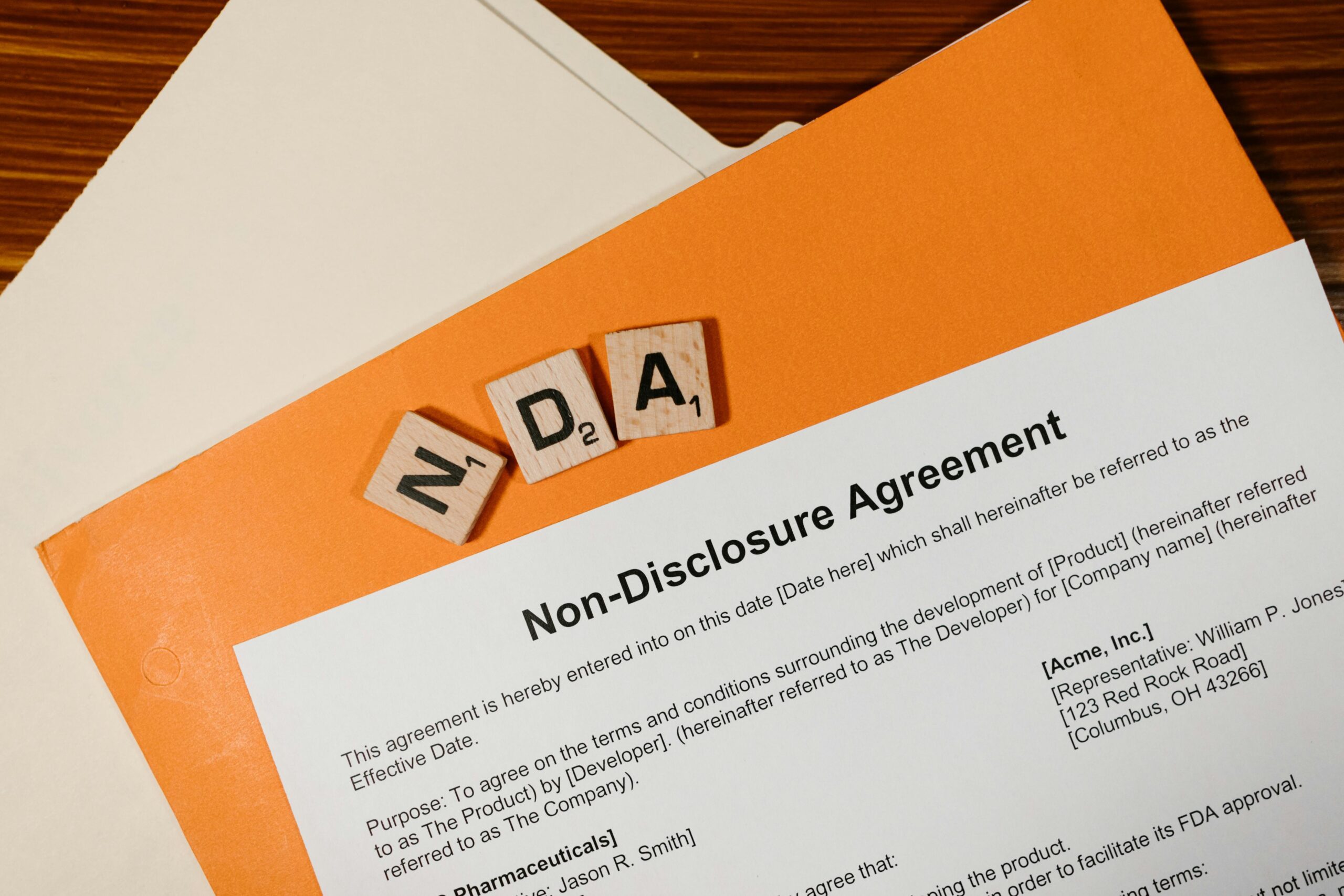Conducting Due Diligence in Private M&A:
A Comprehensive Guide
Why This Matters Now
A recent KPMG survey found that 56% of deal‑makers walked away from a transaction in the past two years because diligence uncovered a critical issue. That single statistic captures the stakes: in today’s market, diligence is no longer a formality – it can be the difference between closing a deal and abandoning months of work. This article unpacks the due diligence process step by step, shows how each workstream fits together, and offers practical tips drawn from current market data.
What Due Diligence Really Does
At its heart, diligence is a confidence check. Buyers use it to confirm that the company they think they are buying is the company they will actually own after closing. That means checking numbers, contracts, people, and sometimes even the plumbing in the walls. Due diligence allows a buyer to confirm seller value, uncover hidden liabilities, and shape the deal structure. Due diligence is much more than legal box‑checking, it’s fa multi‑disciplinary assessment that can influence purchase price, deal terms, and integration planning. When done well, diligence also spotlights growth opportunities (not just problems) so the integration team can hit the ground running instead of scrambling to fix surprises.
Planning the Work
Setting Priorities First
A deal team that tries to inspect every document with equal intensity runs out of time, money, or both. Start by agreeing on the handful of drivers that truly affect value. In a software company, that list might include customer churn, code ownership, and data‑privacy compliance. In a manufacturing deal, it could be equipment uptime, labor contracts, and environmental permits. Once priorities are clear, the request list writes itself.
Building the Right Team
No single professional can spot every issue. Transactions now rely on a mix of lawyers, accountants, tax advisers, technical experts, and sometimes environmental engineers or cyber‑security specialists. One person (usually outside legal counsel) keeps the master schedule, and is responsible for ensuring each specialist stays on track for closing.
Collecting Information
Using a Virtual Data Room
Most sellers load documents into a secure online portal that tracks who sees what. Modern platforms tag files automatically, making it easier to search thousands of pages. Buyers should still keep a living request list because the first round of documents always triggers follow‑up questions.
Talking to Management
Document review rarely captures unwritten practices such as informal quality control steps, customer handshake agreements, or tribal knowledge held by veteran employees. Structured interviews fill these gaps, and give the buyer insight into how the seller company will function post-closing. Scheduled interviews with the leadership team can surface unwritten practices, verbal side deals, or cultural risks that never show up on a spreadsheet. An open and honest interview encourages managers to share concerns before they become hurdles to closing the deal.
Walking the Floor
A site visit gives color to what numbers cannot show, and can validate what documents and management interviews describe. An observer walking a factory floor can gauge employee morale, inspect maintenance logs, and test compliance with safety signage. Observing a production line or sitting with a customer‑support team paints a picture of day‑to‑day operations. Even a short visit often uncovers practical issues, like outdated equipment or unsecured IT systems, which may need to be addressed in the transaction agreements.
Key Workstreams and Common Findings
Corporate Housekeeping
The basic check is straightforward: confirm that the seller owns what it claims to own, and has the legal right to sell it. Formational documents, stock ledgers, and shareholder agreements prove title and authority. Red flags for a seller can include things such as incomplete or missing board meeting minutes, side deals or uninked equity promises, or hidden shareholders rights that could block a closing. Clearing those issues early keeps the deal timetable on pace.
Financial Health and Quality of Earnings
Buyer accountants should rebuild the financial story of the seller from the ground up. They separate steady earnings from one‑time blips, adjust for owner salaries that will disappear after closing, and look for revenue recognition quirks. The outcome, typically an adjusted EBITDA number, will dictate purcahse price and inform debt capacity. Buyers can also study customer‑level data to predict churn rate and forecast post-closing performance.
Tax Exposure
Tax issues can often hide in plain sight without a thorough review. Diligence evaluates whether tax returns are current and reconciled, ensure compliance rules are met, and that seller’s documentation is solid. Unpaid or disputed liabilities often lead to a dedicated tax escrow or purchase‑price adjustment. Asset purchase deals, which often trigger tax liabilities in multiple jurisdictions, will need extra attention paid to determine whether any state and local transfer taxes arise from the transaction.
Customers and Market Position
Diligence efforts should also include market interviews to supplement document review. Buyers should make blind calls to a sampling of customers and competitors to confirm management’s claims about seller’s market position, and identify any customer handoff costs following closing. Reviewers analyze contract terms – pricing, volume commitments, renewal periods – and measure how sticky each client really is. External interviews add a reality check, confirming whether customers view the seller as a key partner, or just another vendor.
For international transactions, see the KPMG value‑chain due diligence paper for information on how supply‑chain transparency regulations (particularly in the EU) now drive diligence market analysis, and how this can impact the buyer’s obligations.
Operations and Supply Chain
Since COVID, supply shortages and freight rate spikes have highlighted the importance of thorough operational due diligence in acquisitions. The McKinsey Operations Insight series recommends that acquirers stress‑testing vendor lead times and freight lanes to ensure seller’s operations can survive logistics volatility. Operations diligence can tell the buyer if a manufacturing facility is running at 95% capacity, leaving little room for a spike in customer demand. Conversely, operational diligence can identify opportunities for the buyer, such as underutilized seller facilities or supply chain inefficiencies, which can uncover hidden value.
Legal Contracts and Consents
Buyer’s legal counsel should review all of seller’s key contracts to identify clauses that could derail the transaction or have a meaningful impact on the price or deal terms. Non‑compete terms, anti-assignment clauses, and termination rights of each agreement will dictate how smooth the post-closing transition may be. For example, a vendor or customer contract that appears to be an asset may contain provisions which allow the other party to walk away if ownership shifts (or may prohibit assignment of the contract entirely), which can significantly affect post-closing value. Flagging these clauses early lets the buyer negotiate waivers or demand closing conditions to protect against an abrupt revenue drop after the transaction closes.
Intellectual Property and Technology
Intellectual property (IP) diligence confirms that all proprietary technology, trademarks, and domain names are owned or properly licensed. A common gap arises when founders assign patents to themselves personally or when contractors create code without signing invention‑assignment agreements. Buyers should seek corrective assignments or escrow holdbacks until chain of title is perfected on any valuable IP. In tech heavy deals, buyers should verify open‑source usage and patent assignments. Problems usually fall into two buckets: former contractors who never signed invention assignments, and open‑source licenses that force full code disclosure or restrict commercialization. Both problems can be solved, but the solution often requires time and money, which should be reflected in purchase price adjustments.
People and Culture
Employment contracts, bonus plans, and retention risks affect employee morale and stability. A sudden vesting of options at closing can dilute equity or drain cash. The corporate culture of the seller is vitally important (and often overlooked) to the success of the post-closing transition. A buyer planning to merge teams needs to gather insight into leadership styles, decision‑making speed, and communication norms of the seller to ensure adequate culture fit when the companies are consolidated.
ESG Factors
Investors and regulators have raised the bar on environmental and social metrics overall, and in some jurisdictions ESG factors may determine whether a deal can close at all. Moreover, the Harvard Law School Forum on Corporate Governance predicts intensified enforcement of climate‑related reporting in 2025 and beyond, so buyers should ensure ESG issues are factored into their diligence efforts. Poor ESG performance can erode value through reputational damage or supply‑chain penalties – a company with a poor safety record or high emissions could face fines or customer pushback. To keep any ESG risk in check, buyers can require purchase price adjustments to post‑closing ESG improvements, or carve out indemnities for legacy ESG issues in the transaction agreement.
Cybersecurity and Data Privacy
High‑profile cybersecurity and private data breaches make cyber diligence non‑negotiable in modern M&A transactions. Outside expert evaluations, tech policy reviews, and simulated phishing tests can help gauge seller’s cybersecurity risks. If the gaps are severe, buyers can ask for remedial action before closing, or require a holdback amount to cover potential fines or liabilities. Highlighting this issue, a recent Wall Street Journal article emphasizes the importance of thorough due diligence efforts, particularly with respect to cybersecurity risks, and highlights its importance in closing a modern M&A transaction.
Regulatory Compliance
From licensing to anti‑corruption rules, compliance gaps can derail a deal. The U.S. Department of Justice now offers a safe‑harbor for buyers that self‑report misconduct within 180 days. This safe harbor policy is intended to encourage voluntary self-disclosure of misconduct discovered in M&A transactions, allowing acquiring companies to avoid criminal liability if they promptly and voluntarily disclose misconduct by the acquired company and remediate the misconduct within a year of the deal’s closing. Knowing that timeline, buyers should negotiate disclosure schedules that preserve the option to self‑report without breaching confidentiality.
How Findings Shape the Purchase Agreement
Price Adjustments
When diligence reveals swings in working capital or hidden debt, buyers adjust the offer. Some propose a two‑tier price: a firm base payment and a contingent earn‑out tied to revenue, margin, or customer retention. Earn‑outs pass part of the risk back to sellers and keep them engaged after closing.
Representations and Indemnities
The more uncertainty around a risk, the more likely it ends up in a special representation or a longer survival period. Cybersecurity breaches, for example, often warrant dedicated reps and a carve‑out from the general liability cap. Representations and warranties insurance has gained recent popularity, especially for transactions exceeding $50 million. Insurers will price policies based on the scope and quality of due diligence, meaning thorough due diligence efforts can quite literally determine buyer’s ability to obtain balance‑sheet protection.
Sandbagging and Knowledge
Sandbagging clauses govern whether a buyer can claim indemnity for issues discovered before signing but not resolved in the agreement. Pro‑sandbagging positions preserve remedies and are common in U.S. deals. Sellers resist by inserting anti‑sandbagging language or knowledge qualifiers that narrow indemnity to unknown breaches at signing. Buyers want freedom to claim for any breach they find after closing, even if they suspected the issue before signing. Sellers argue that foreknowledge should bar recovery. The compromise depends on leverage: a strategic buyer in a hot auction might accept an anti‑sandbagging clause, while a lone bidder is often successful in negotiating pro‑sandbagging language in the agreement.
Private Equity vs. Strategic Buyers
Private equity firms lean on leverage and time their exits, so cashflow reliability and debt headroom dominate their diligence. Strategic buyers look for synergy, such as cross‑selling opportunities and scalable cost savings, and may be comfortable accepting some short‑term volatility if the long‑term fit makes sense. A thorough understanding of the motives and priorities of both buyer and seller helps to predict which issues may become deal breakers, and which are simply a preference and immaterial to closing.
Technology Tools in Diligence
Artificial intelligence platforms can sift thousands of contracts in hours, flagging non‑standard clauses for human review. Analytics dashboards show risk hot‑spots at a glance. But tech is only a tool – legal, tax, and other specialized professionals still need to confirm data, ask follow‑up questions, check context, and decide whether a red flag is material to the deal closing. Deloitte’s governance guidance on AI in diligence warns that unchecked algorithm bias can miss nuanced obligations buried in amendment chains, noting that best practice pairs automated tools with review by legal counsel to balance efficiency and accuracy.
Cross‑Border Deals
International targets add layers: currency swings, local labor laws, and foreign‑investment approvals. Buyers translate financials from IFRS to GAAP, hedge exchange risk, and line up filings so antitrust clearance and national‑security reviews finish on time. Data‑localization laws may even dictate where servers sit after closing, shaping the integration budget.
Managing the Timeline and Budget
Conducting due diligence in stages is hugely helpful to coordinate efforts and timetable planning. Phase one covers the basics: ownership, high‑level financials, and any deal‑stopping legal concerns. If no deal-breakers appear, phase two then dives deeper into customer contracts, IT systems, and niche regulations. This phased structure helps to keep costs aligned and ensure transparency.
Clear communication between buyer and seller saves invaluable time and money in expediting closing. Centralizing questions in a shared tracker can prevent multiple diligence investigators from peppering the seller with overlapping and redundant requests. Even a small transaction can involve dozens of professionals, and a clear diligence structure helps ensure costs stay in check and keeps the closing timeline from spiraling.
Oklahoma M&A Spotlight: Local Trends Shaping Diligence
Oklahoma’s M&A deal scene has accelerated in recent years, fueled by energy diversification and advanced manufacturing. A ClearRidge Capital report notes a 17% jump in deal volume through September 2024, with many middle‑market transactions centered in Tulsa and Oklahoma City. Oklahoma companies acquiring firms with family ownership structures should also ensure ownership documentation and succession planning is prioritized in their due diligence efforts prior to closing.
The Oklahoma Department of Commerce touted a new record for Oklahoma capital investment and job creation in 2024, particularly in the aerospace and renewable energy industries. In addition, the state’s Quality Jobs incentives and tax‑credit programs require ongoing compliance, so buyers look closely at payroll records and reporting procedures to avoid claw‑backs after closing.
Key Takeaways
- Diligence is about confirming value and avoiding hidden burdens, not just collecting documents.
- A clear scope tied to real value drivers keeps the process efficient and relevant.
- Findings translate into price tweaks, special indemnities, and integration action items.
- Cybersecurity, ESG, and supply‑chain resilience have joined finance and legal checks as headline issues.
- Oklahoma’s growing deal market adds unique wrinkles like state incentive compliance and energy‑sector permits.
Legal Disclaimer: This article provides general information and does not constitute legal advice and does not create an attorney‑client relationship with Cantrell Law Firm. Each transaction is unique; professional counsel should be consulted before acting on any topic discussed here.
Questions about a pending transaction? Contact Cantrell Law Firm for assistance and guidance in closing your deal.





